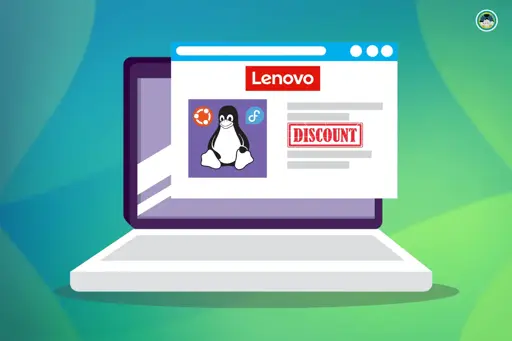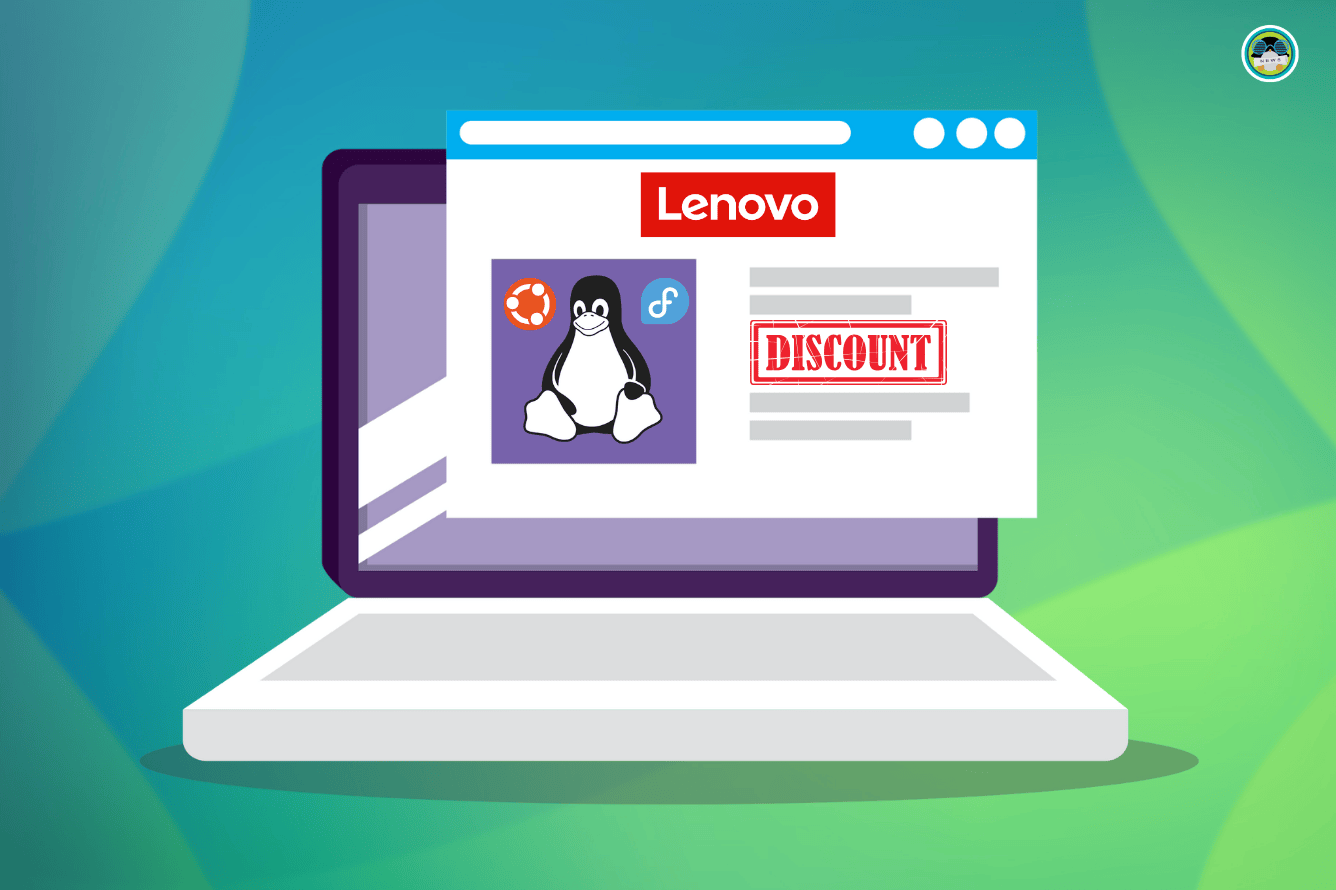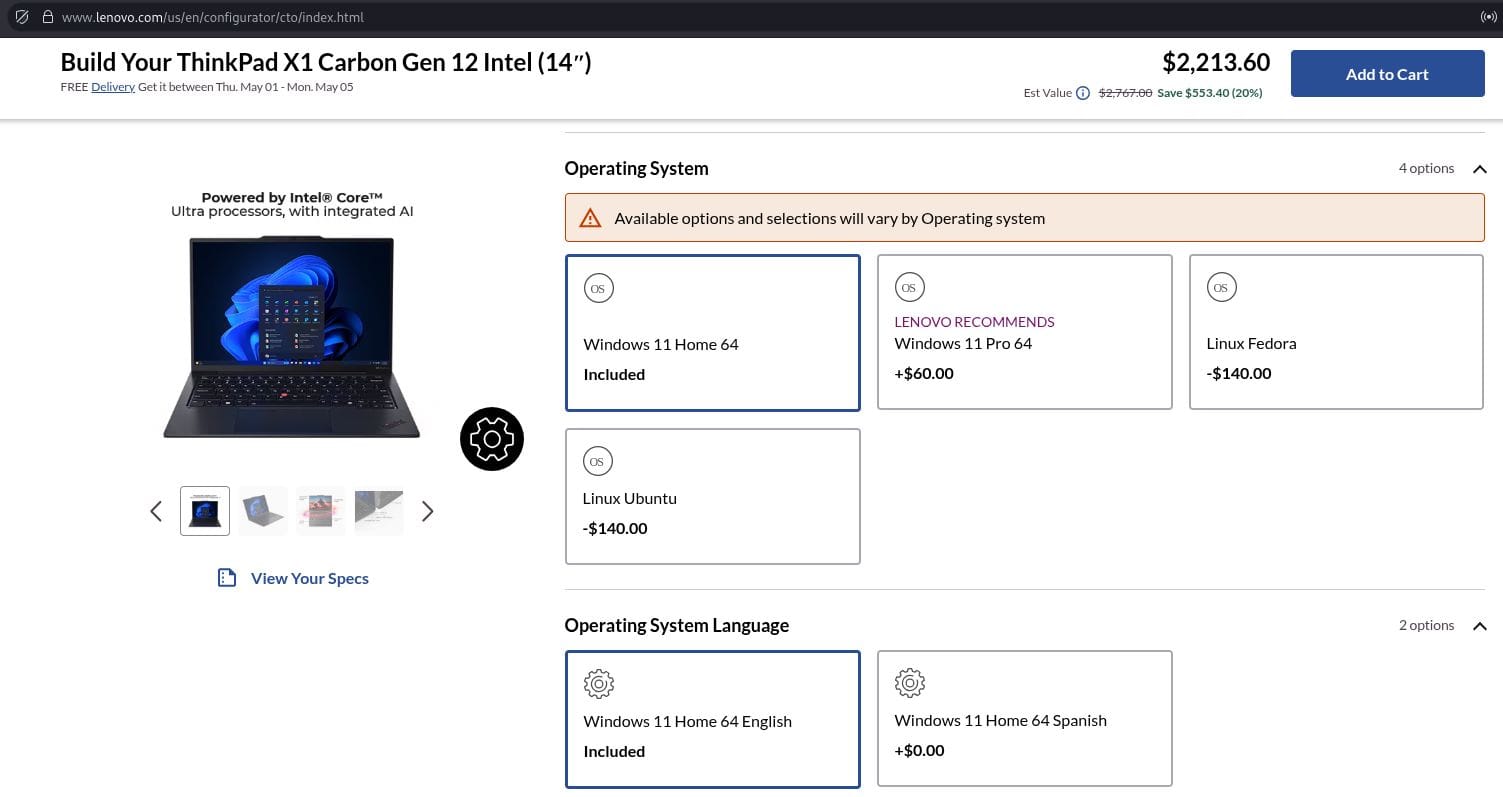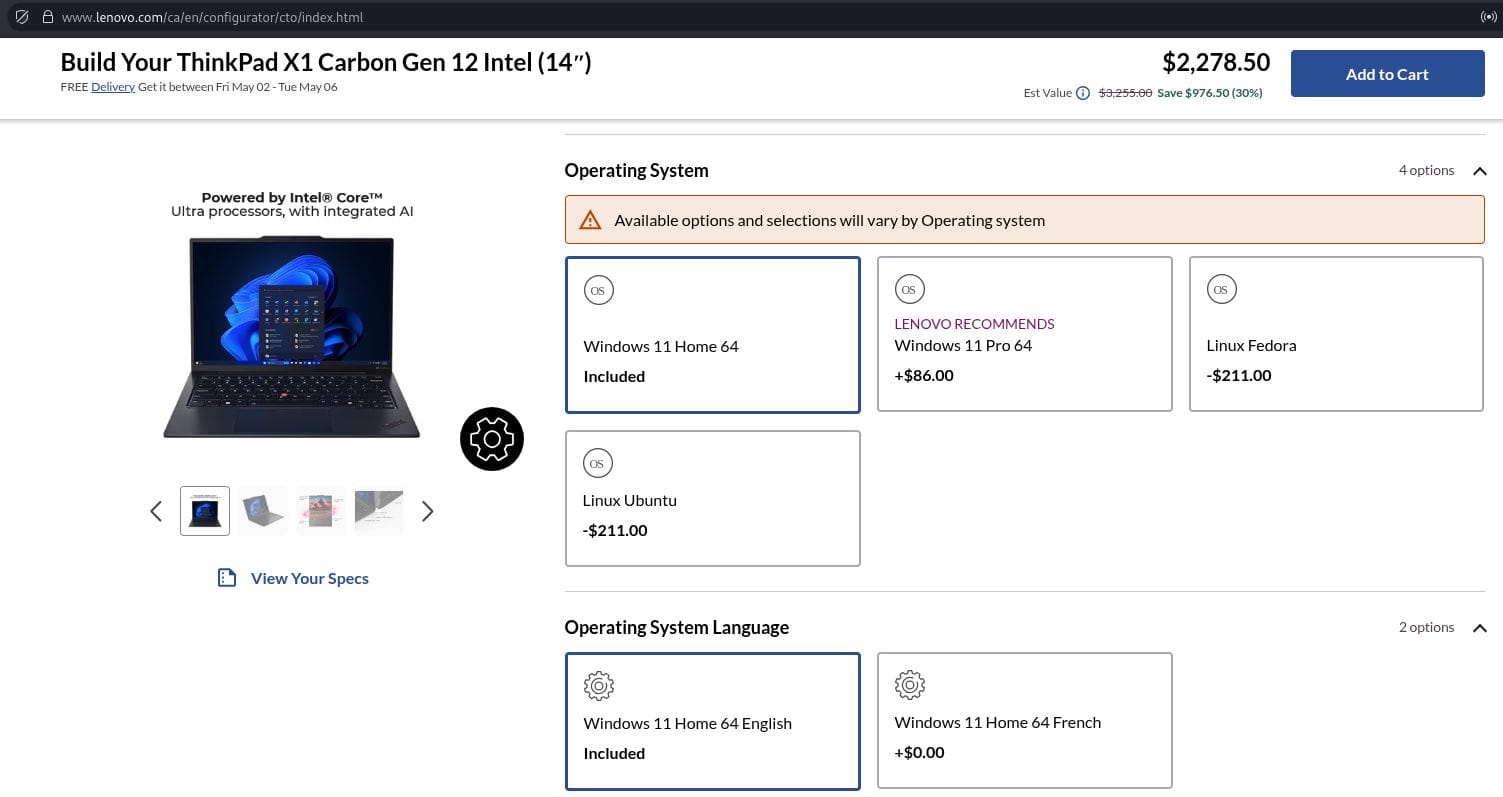cross-posted from: https://rss.ponder.cat/post/165736
At least in the U.S. and Canada, that is.
This was brought to my attention thanks to a Reddit post where a user (presumably a resident of Canada), had posted how Lenovo was shipping laptops with Fedora and Ubuntu at a cheaper price compared to their Windows-equipped counterparts.
Others then chimed in, saying that Lenovo has been doing this since at least 2020 and that the big price difference shows how ridiculous Windows’ pricing is.
Cutting the Windows Tax
When I dug in further, I found out that the US and Canadian websites for Lenovo offered U.S. $140 and CAD $211 off on the same ThinkPad X1 Carbon model when choosing any one of the Linux-based alternatives.
US pricing on left, Canadian pricing on right.
Interestingly, while the difference in pricing is noticeable, your mileage may vary if you are looking for such laptops on the official website. Not all models from their laptop lineup, like ThinkPad, Yoga, Legion, LOQ, etc., feature an option to get Linux pre-installed during the checkout process.
Luckily, there is an easy way to filter through the numerous laptops. Just go to the laptops section (U.S.) on the Lenovo website and turn on the “Operating System” filter under the Filter by specs sidebar menu.
Yes, it’s as simple as that. You can do the same for the various official online regional storefronts that Lenovo runs to see whether Linux-based operating systems are being offered on their laptops in your country.
Closing Thoughts
It is good to see that Lenovo is offering Linux in its laptops. In fact, there is another big-name laptop manufacturer, Dell, who also does something similar with its Ubuntu-certified laptops, but both have the same constraint of having limited options for buyers.
Also, as far as I know, Dell doesn’t reduce the pricing if you choose Linux instead of Windows. Correct me if I am wrong in the comments.
Nonetheless, I think these manufacturers could do a better job in marketing these Linux-based alternative operating systems to general consumers, showing them how they can save big when opting for these instead of the pricey and bloated Windows.
Otherwise, we might have to start observing Windows Refund Day again.
💬 Your take on this? Would mainstream users benefit from having Linux pre-installed on their laptops?
From It’s FOSS News via this RSS feed
Only on North America, you say?
pity.
For at least the last decade, Europe has been abandoning Microsoft in droves.
I suspect soon Microsoft will be unknown in Europe except as “That system they use over there.”
The system that should not be named!
Then they will unironically call it the freedom OS
Or the European OS.
That is awesome
More manufacturers need to do this!
Some do! Or at least, they give you a choice of OS at different price points. NovaCustom, Eurocom, and AVA Direct come to mind. Of course, there are also plenty of vendors that ONLY offer GNU/Linux pre-installed…
Dell used to. Not sure of they still do.
Free rainbow socks or no deal!
Year of the Linux desktop is here! /s
I bought a laptop without a Windows license from Lenovo years ago. It came with FreeDOS, if I remember correctly. I wanted to install Linux, so I didn’t care. In some areas they’ve been offering this for a while now.
I got an ASUS laptop with FreeDOS back in 2015 for the same reason. Had to upgrade the HDD and RAM, but It still works like a champ.
A step in the right direction. If they don’t offer a price difference, they can keep it.
We need better and longer term uefi/bios support as IBM/lenovo used to have systems that specifically prevent uefi Linux installs from booting.
That trust was broken then, they do not have it now.
That’s great! - But. But, I hope some people check it out carefully. Some years ago, Lenovo middle-man’d the SSL root certificate on laptops so they could inject ads into Https web pages. (And spy on users? Steal passwords? Manipulate bank accounts? I hope not…)
I wonder what they could hide in an own Linux install?
Dell did the same thing - in the same year too.
You should always clean install your OS. Let the guys wanting to spy on you put some effort in.
Really?! Do you have a source? I’d like to look this up!
https://www.zdnet.com/article/how-to-remove-dells-superfish-2-0-root-certificate-permanently/
It’s actually called eDellRoot, not Superfish though.
You can safely assume that probably every manufacturer did or still does similar thing - whether they’re caught is another story though.
Oh, wow.
Do you have any reputable articles of this? I’m interested cheers
Thank you that’s appalling and I’m glad I build my own pcs
Just look it up. It made the news rounds about 10 or so years ago. It was a big deal at the time. Just about everyone covered it and Lenovo acknowledged it and, IIRC they apologized for it
Apologizing and stopping are two different things.
We used to undermine the security of our customers systems.
We still do. But we used to, too.
“Sorry we broke into your security on purpose.”
“We’re sorry we’re facing consequences. We’ll take action to make sure this doesn’t happen agian.”
And? I’m not sure what point you’re trying to make.
Now they need to make the BIOS updates installable from Linux or ability to flash them from the BIOS. But I like this move, hope more start doing so.
It already is, via https://fwupd.org/
which is integrated into the app store on fedora, at least
kde’s discover app store supports it too
i figured, but since i wasn’t 100% sure i didn’t wanna spread misinformation
It kinda blows my mind that “no OS” isn’t the cheapest option
It’s the same reason that you have to pay more to stream videos without ads…
Yeah, smart TVs with no OS are way more expensive than the ones riddled with ads as well.
I changed to the projectivity launcher on my Android TV and it was night and day in terms of performance. No ads. The UI doesn’t change every other week to make me look at some new show I don’t care about. I can literally just hide everything I don’t want to see.
I should probably look into actual entire OS swaps available for my TV but I don’t have the time. Changing the launcher and using ADB (over lan) to disable updates and apply some optimizations was worth the day it took me.
Turns out the hardware on the TV is fine. The software was just complete garbage and got worse with every update.
Now if only I could fix the UI in the actual apps like YouTube. But still it’s a lot better. I’ll probably install the YouTube alternative app one day when I have time.
My wife started using the TV over her tablet after I changed it. She said she hated how slow it was to just turn on and start that she just would go to her tablet instead.
Yeah, out of the box experience is terrible. I wish we could’ve installed custom ROMs on TVs too but most of them are vendor-locked. Projectivity Launcher is a life saver. Default everything is just bad. I did a similar thing and removed many apps via ADB.
For Youtube alternative, SmartTube is the best. You can sideload it via ADB.
Nice. I don’t think I saw SmartTube before. Will check it out. Thanks.
Sometimes it might not work, and when that happens just check out a new update. It will also notify you when there is an update.
You’re welcome!
So… Windows is an ad delivery system.hmm, it makes sense, because as an operating system that’s the only thing it does well is show ads.
Stremio doesn’t charge me more. I dont know why anyone would pay to stream. Or not block ads.
Well, these services do require money to run. If everyone were as ‘clever’ as you are then we’d have little content indeed.
I seem to recall in the past Microsoft pressured manufacturers to not sell computers without an operating system, arguing that unscrupulous consumers would install pirated copies of Windows on them. A ridiculous argument, but it was the excuse they used.
If they could ship a computer with the option upon first boot of Windows, Linux, or no OS without having to pay license costs of Windows that would be fine, but that’s not how it works. 99% of people want Windows. Any laptop shipping with no os would just be sent back a few months later after sitting on the shelves for a few months.
No way thats 99%
Out of windows and linux, it’d be close to 99%. Linux’s desktop OS marketshare is 4% according to a quick google, Windows at ~70%, MacOS at ~26%. Since MacOS isn’t an option on these, the choice between Windows and Linux would likely be 96% Windows, 4% Linux.
So sure, I’ll admit I got that wrong - not 99%, 96% based on 2025 marketshare.
This is awesome and I love it. Maybe they could even take a few more dollars off by not having any OS installed (bypassing the labor costs of imaging an SSD). I’ll be installing my own copy anyway, so I’m fine with a blank SSD.
Those manufacturers where you can select either Linux or no OS don’t charge extra for Linux.
I mean it’s like maybe a dollar or two for the labor costs, so that’s understandable. I’d still prefer just a blank SSD anyway.
It’s likely done in an automated way by the same equipment that tests the hardware, so costs are probably more along the lines of a few fractions of a penny, and imo shipping any device without an os at all is a bit silly as they could very likely end up in the hands of someone without the capability or equipment to image them.
The cost is actually negative given that they get to pre-install whatever software they want into it.
For someone that wants to install their own OS, it coming with an OS installed by default is 100% irrelevant because you’d be plugging in a bootable drive on first boot up anyway.
No. If it does not work you can’t be sure if it is your fault or the device is broken. This will lead to support costs for the manufacturer
Why can’t you?
Because 99.999% of the time the hardware you’re buying is different from the hardware you have prior experience with. Even if the model numbers are the same there could be a change in hw or fw revision that breaks compatability with whatever drivers you previously had success with.
You’re installing an operating system though, that’s irrelevant. You’re telling me the people that want their laptop to come with no OS because they want to install their favourite version of Linux because they’re “l33t haxors” can’t tell the difference between broken hardware and incompatible drivers? And they’re installing Linux? Where drivers are one of the biggest issues?
Removed by mod
2025 is the year of the Linux
desktoplaptop!I would really like to see broad support for TPM-backed FDE, which also requires secure boot to work to implement this properly.
For me, this is essential to have for feature parity with Windows on laptop.
other distributions should start having an option for this in the GUI installer, but it might be tricky for the average user
Arch Wiki has a guide on FDE using the TPM and it’s transparent in my everyday usage
some minor issues I see are:
- Secure Boot needing to be disabled then re-enabled during install for it to work as intended
- needing to write down a long backup passphrase, but this also happens on Windows and MacOS iirc
One major obstacle is third party drivers, specifically Nvidia, that forces building and signing your own kernel modules. It can be done, but it’s certainly more complexity than distributing signed binary drivers from the distro. I think Ubuntu has preliminary support for TPM-backed FDE, but only if you aren’t using such drivers. It doesn’t work in combination.
I don’t want to sign my own modules. I want them to shipped signed, so the key isn’t expected to be on my machine. If I were doing kernel development work, I’d have disabled secure boot entirely anyway.
I would love to have secure boot for a customized distro. it only really needs to attest the firmware and the bootloader because they can’t be encrypted, which would serve as a form of tamper protection
Let’s not have tpm at all instead.
As long as the user owns the TPM and has full control over it, I don’t see a problem. I paid for that hardware. I want to use it. There are already tools that can talk to it. It’s just not fully implemented and integrated into the system in a secure fashion. Indirectly, you kind of point out why there hasn’t been as much motivation to provide these features because they’re associated with the user giving up control, but it doesn’t have to be this way. The hardware can work for me if the support were there.
With the right support, it can even be combined with the password. This lets me enforce that the drive only unlocks in this machine, with this password, and only with the software that I set. That’s certainly more secure than how most distros do FDE today. It covers more use cases and enables a much stronger threat model.
Since installing Linux, my battery life has more than doubled.
That alone is reason enough to switch to Linux
Yeah, while I don’t have a laptop myself, I installed Fedora on my desktop and it idles quieter. I suspect it’s not doing as much in the background as Windows was.
My plan is working nicely, next laptop will be a Lenovo
Here in Europe it was possible to buy almost all laptops and desktops from Lenovo without OS preinstalled since long time, saved a lot of money that way. It’s nice that they officially offer Linux now.
I thought OEMs only paid like $10 for Windows?
they tend to make money off it due to the bundle deals and commissions and what-not.
a major oem charging $140-200 is all profit.
Perhaps it’s a direct response to the tarrifs, as well as an instance of a Chinese company finding a way to fuck over an American company now that trade relations across the board between the US and PRC are juddering to a halt.
It says they’ve been offering this since 2020
It’s usually 10% of the device MSRP for windows pro.
There are some very low cost devices that get it for $10 for windows home…
Looks like this was Windows home. Windows pro was a $ upgrade.
I think you misunderstood what’s being discussed. In this post, all Windows versions cost money. It’s just they bake it into the advertised price and say Linux is a reduction, which means you’re paying the difference if you choose to go with the default. It isn’t free, no matter how they display it.
Seriously? Go back and read carefully.
In the post, Linux has a “negative” cost. In reality this means it’s closer to the base cost and the “free” Windows is baked into the price, not actually free. Both versions of windows have a cost. One is higher than the other though.
Just for you and your misreading: the previous guy said Windows Pro is 10% of MSRP. Well you open the pic in the original post and surprise it’s ~10% for Windows Home version. Aka just for you; you pay 10% for Windows HOME edition, aka everyone knows it’s not free because you just paid 10% for it. Windows Pro edition is a $ upgrade from the HOME edition, which for this offer puts Windows Pro closer to ~15%. Not the 10% the previous guy thought. The only person that misread and couldn’t follow the post is you.
OK, just so you’re aware, since you are being condescending, there’s two pictures. One of them Windows Home is ~10%, one Windows Pro is ~10%.
Both cost money. I don’t know what $ upgrade means, but I’m assuming you mean they cost extra, which both do no matter what, which is what I was talking about at first. It’s not only one that costs extra.
I wonder what the labor is to install it. Well I guess it’s the same labor as Linux.
Anyone know how they do it? Do they plug the drive into a cloning machine before installing it in the computer?
They have an image of the OS that they copy on the SSD for each machine.
Everything about devices like these is done without employees manually doing stuff on them.
I wonder what the most manual part of the whole process is
Probably QA tbh. Other than that I’d think it would be plugging some of the delicate ribbon connectors in.


















